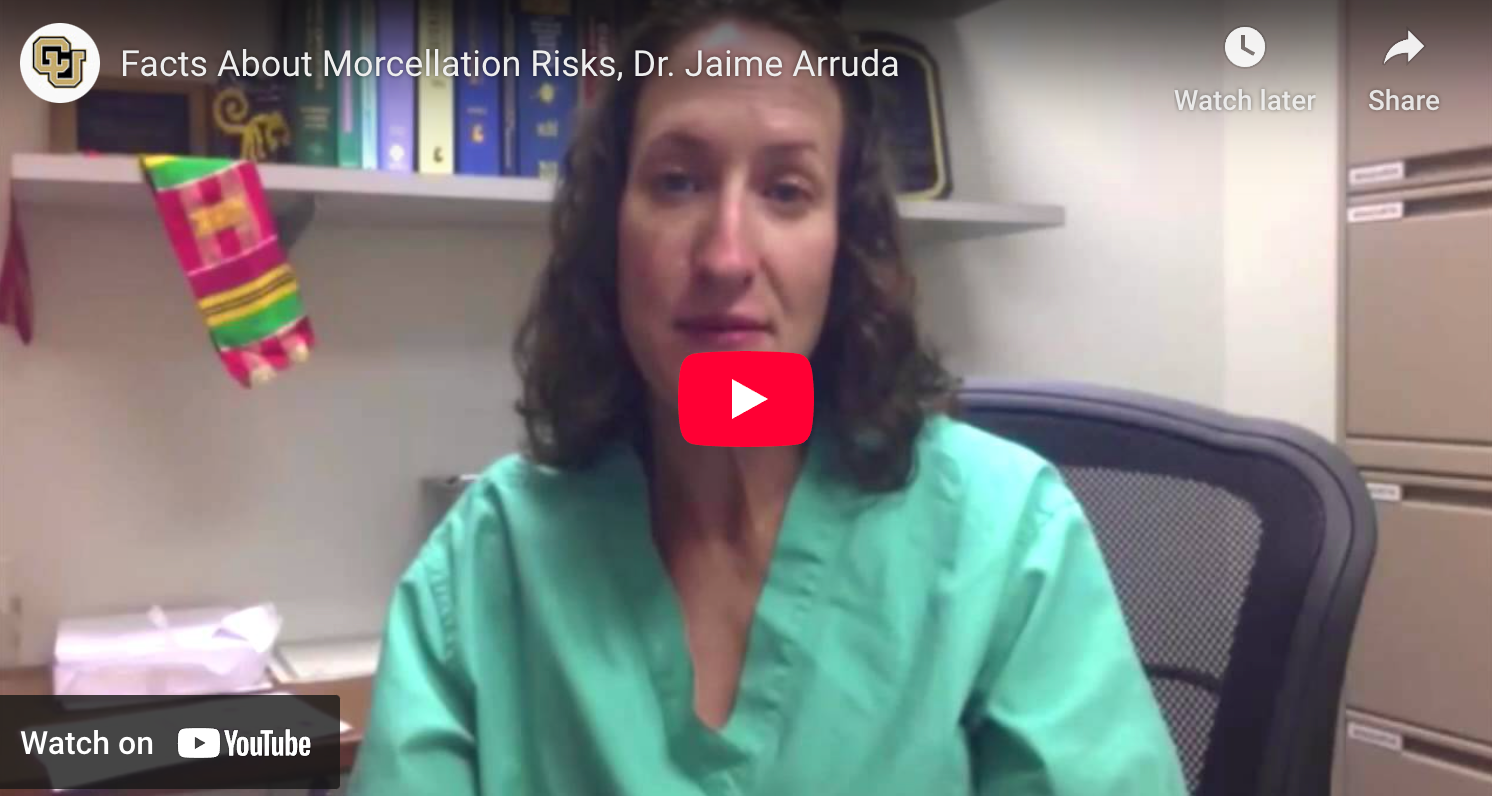One newsworthy topic lately in gynecologic surgery has been the use of power morcellation in laparospcopy. Power morcellation is a procedure where once you’ve had your uterus or fibroids removed laparoscopically, we place a small device into one of our laparoscopic incisions and remove the uterus or fibroids in a piecemeal fashion.
Morcellation historically has been very useful to allow patients to have a minimally invasive surgery for an otherwise large fibroid or uterus removal that would have required a big incision and a big recovery. So for many patients over the last decade or two, we have relied on morcellation in order to perform minimally invasive surgery.
The history behind this topic is that in rare cases where a cancer is found in a fibroid, if we morcellate the cancer, that can increase the risk to the patient of spreading the cancer in her pelvis and even shortening her life.
It’s important to remember that with most surgeries performed for fibroids, greater than 99 percent of fibroids are benign and can be safely morcellated. But you are always taking a small risk that you have a cancer in a fibroid that if morcellated could be harmful to you.
The FDA did come out with statements regarding using caution with morcellation. It is interesting to note that two of our large governing bodies in OB-GYN, both the American College of Obstetricians and Gynecologists and the Society of Gynecologic Oncology, have come out with statements supporting power morcellation in a well-counseled and correctly selected patient.
I think the take home message is that it is important to talk to your doctor about the risks of morcellation if that is going to be part of your surgery. You should have a clear understanding of the small risk of cancer spread associated with morcellation, and make sure you are balancing the risk of the alternative to morcellation, which might be a larger incision, with the risk of morcellation.

